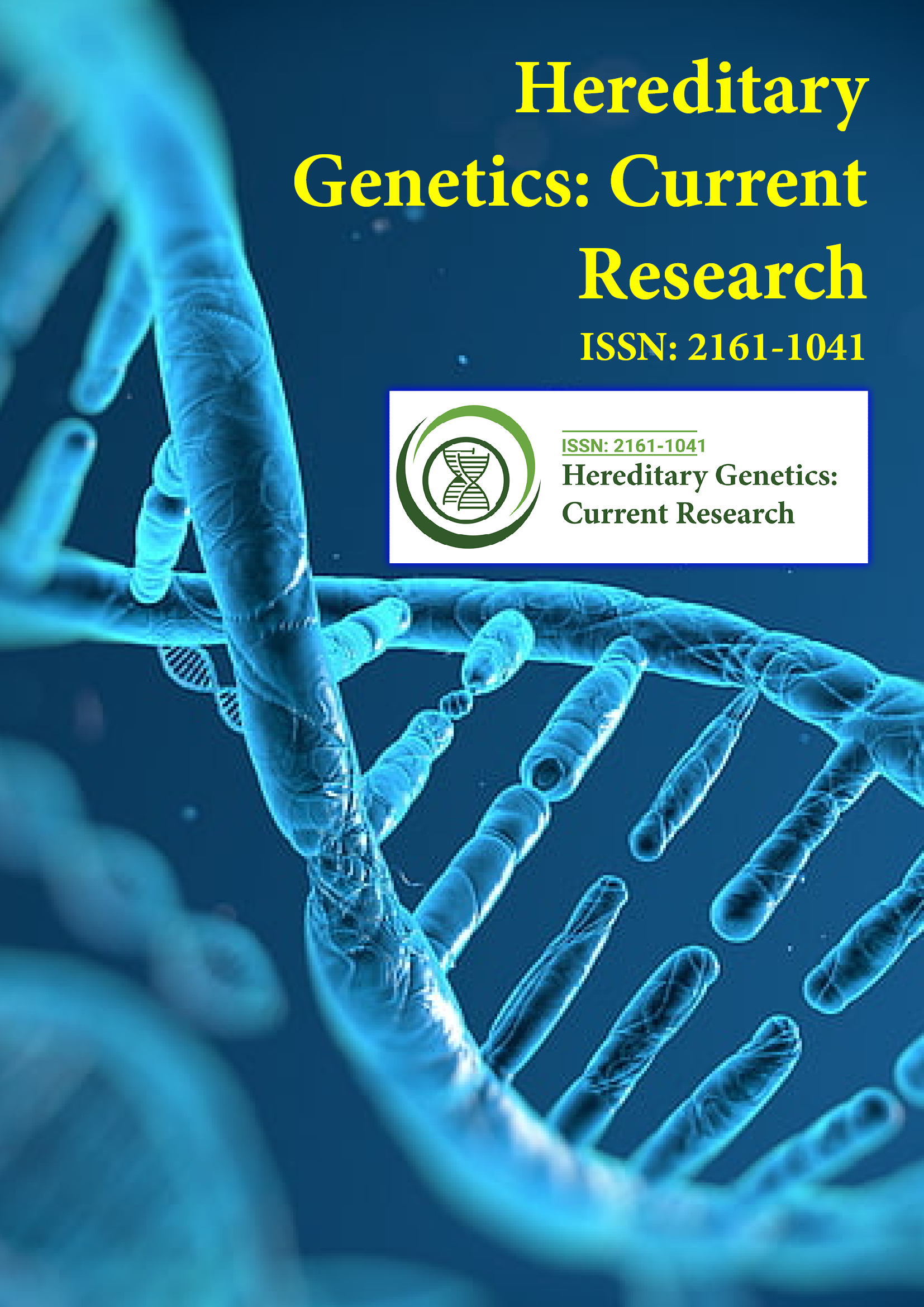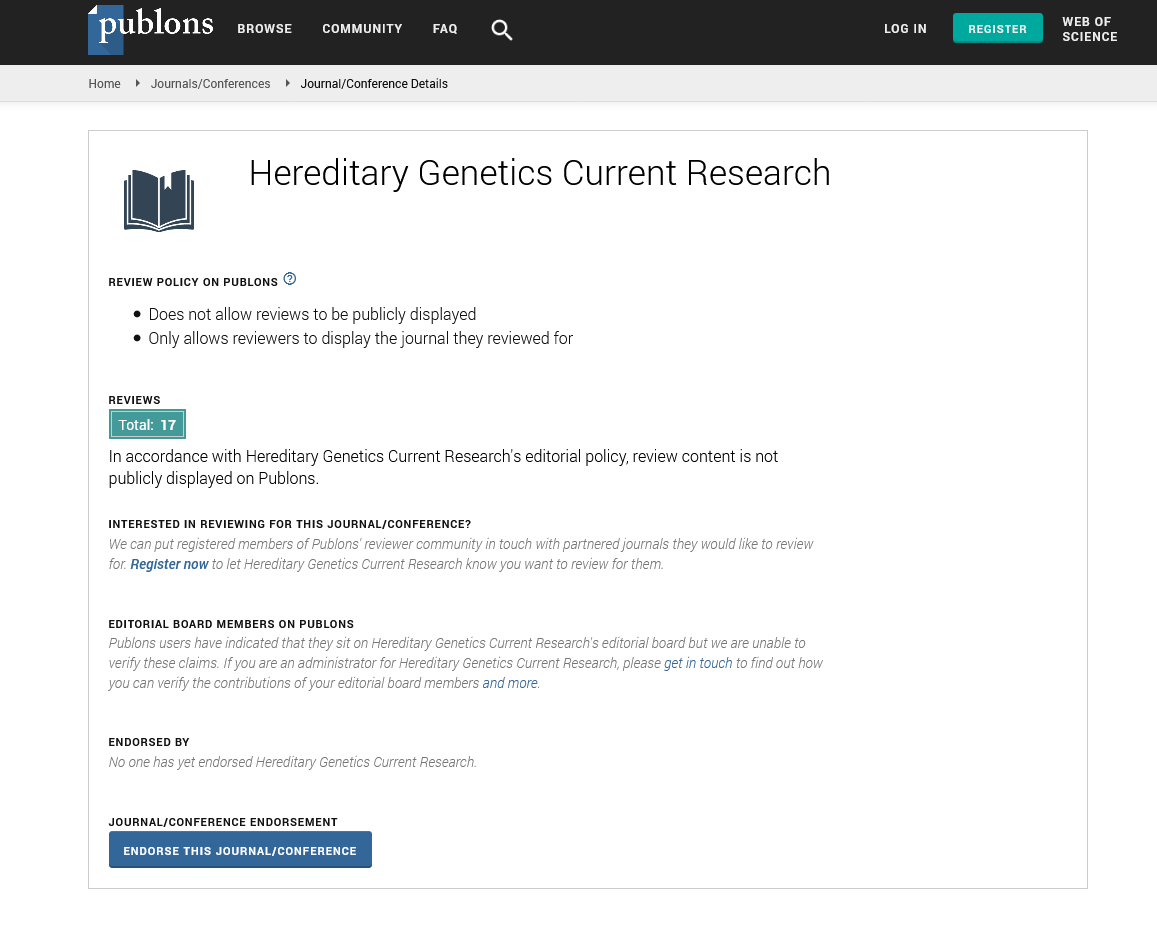Indexed In
- Open J Gate
- Genamics JournalSeek
- CiteFactor
- RefSeek
- Hamdard University
- EBSCO A-Z
- NSD - Norwegian Centre for Research Data
- OCLC- WorldCat
- Publons
- Geneva Foundation for Medical Education and Research
- Euro Pub
- Google Scholar
Useful Links
Share This Page
Journal Flyer

Open Access Journals
- Agri and Aquaculture
- Biochemistry
- Bioinformatics & Systems Biology
- Business & Management
- Chemistry
- Clinical Sciences
- Engineering
- Food & Nutrition
- General Science
- Genetics & Molecular Biology
- Immunology & Microbiology
- Medical Sciences
- Neuroscience & Psychology
- Nursing & Health Care
- Pharmaceutical Sciences
Commentary - (2022) Volume 11, Issue 3
Agro Biodiversity and Inherited Erosion of Crop in Plant Genetic Resources
Carlisle Nishi*Received: 02-May-2022, Manuscript No. HGCR-22-17211; Editor assigned: 06-May-2022, Pre QC No. HGCR-22-17211 (PQ); Reviewed: 20-May-2022, QC No. HGCR-22-17211; Revised: 30-May-2022, Manuscript No. HGCR-22-17211 (R); Published: 07-Jun-2022, DOI: 10.35248/2161-1041.22.11.215
Description
Diversity in Plant Genetic Resources (PGR) have the possibility to create new and improved cultivars with desirable qualities, including both farmer-preferred traits (yield potential, large seed, etc.) and breeders-preferred traits to the diversity of plant genetic resources (pest and disease resistance and photosensitivity, etc.). Natural genetic diversity within crop species has been employed, since the beginning of agriculture to produce enough food for subsistence, and it is currently mostly used to produce excess food for expanding populations.
Crop plant evolution, whether it is human or naturally driven, is essentially based on the population's genetic diversity. The degree of differentiation between or within species can be used to define diversity. All crop improvement programmes are built on the already present intra and interspecific variations. There may not have been any room for improvement in plant performances for various features if all the members of the species had been similar. Natural variation and divergence among crops have been extensively identified and employed to advance crop species ever since systematic plant breeding first began. However, natural diversity was reduced as a result of biased breeding techniques that prioritised the enhancement of a select few features (like yield and its component traits). The frequent use of a small number of carefully chosen genotypes as parents in varietal development programmes and the introduction of a small number of exceptional lines to numerous nations have increased genetic similarities among contemporary crop cultivars. Agriculture professionals are extremely concerned about the decreased genetic variety and variability among crop plant species. Further improving agricultural types will be challenging given the decreased genetic diversity. Breaking yield limitations will become challenging, and plant breeders won't be able to keep up with the demands caused by an increasing population. Climate change and related unanticipated events make genetic diversity even more significant since it may be the source of several unique features that give tolerance to various biotic and abiotic pressures.
The foundation for plant survival in nature and crop enhancement is genetic variety. Plant breeders can create new and improved cultivars with desirable qualities, including farmer and breeder-preferred attributes (high yield potential, large seed, etc.), thanks to the diversity of plant genetic resources (pest and disease resistance and photosensitivity, etc.). Natural genetic diversity within crop species has been used from the dawn of agriculture to supply the demand for food for subsistence. Later, the emphasis turned to producing extra food to feed expanding populations. To ensure that people have a balanced diet, the yield and quality characteristics of important food crops are currently being prioritized. Breeding of climate adaptable cultivars is becoming increasingly crucial as the environmental situation changes.
The task of feeding an ever-growing population on dwindling arable land is a problem for plant breeding. In this aspect, modern plant breeding has had some success. The restricted genetic foundation of cultivated varieties in many crops has led to genetic fragility. Therefore, a paradigm shift in plant breeding that centres on a variety of genetic resources is required. Genetic variety is increasingly recognised as a distinct area that can contribute to the security of food and nutrition. It will be easier to decide what to maintain and where to conserve it if we have a better understanding of genetic variety. The basis for the sustained creation of new types of crop plants is genetic diversity.
Citation: Nishi C (2022) Agro Biodiversity and Inherited Erosion of Crop in Plant Genetic Resources. Hereditary Genet. 11:215.
Copyright: © 2022 Nishi C. This is an open access article distributed under the terms of the Creative Commons Attribution License, which permits unrestricted use, distribution, and reproduction in any medium, provided the original author and source are credited.

